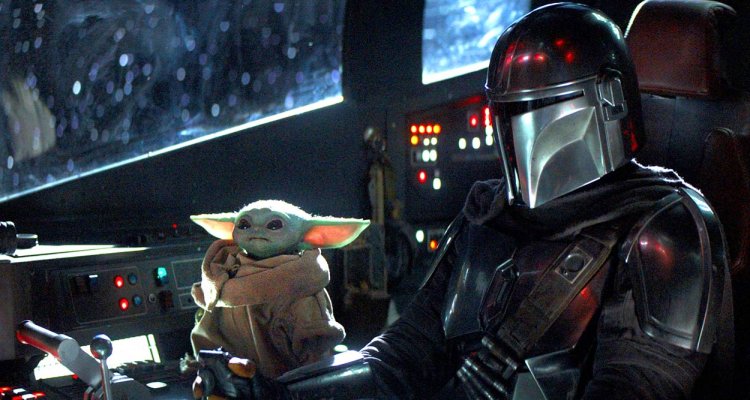So far, “The Mandalorian,” the first-ever live-action “Star Wars” series (and flagship series for the nascent Disney+ direct-to-consumer streaming platform) has nimbly mixed stand-alone episodes, in which our faceless hero (Pedro Pascal) gets into some small-scale intergalactic skirmish, and more mythology-driven interludes in which we learn bits and pieces about our main character’s extended backstory and the clan of equally-faceless warriors he associates himself with. The series’ fourth episode, entitled “Sanctuary,” splits the difference, with our hero (anti-hero?) squirreling himself away on a wooded planet, in what seems like a fairly one-off adventure but proves to illuminate more of who the character is and what state the galaxy has fallen into following the events of “Return of the Jedi.”
At the conclusion of the previous episode, the Mandalorian had made his choice: he’d betrayed his employees and turned his back on the nebulous “guild” of cutthroats, which led to a very cool, “John Wick“-y climax that saw him facing off against a horde of assassins as he tried desperately to make his way to his ship, the Razorcrest. And the reason was obvious with anybody who has been on Twitter since the show’s November 12th debut: his adorable, still-unnamed charge, referred to as “The Asset” (or, if you’ve seen one of the hastily produced T-shirts, “The Child”).
The episode’s cold open takes a noticeably different path, focusing not on the Mandalorian or the central plot, but on a wayward, peaceful planet interrupted by violent raiders. This is the planet that the Mandalorian decides to hide out on, and he takes his precious cargo there. While we’re staying away from plot specifics, much has been made out of this episode introducing Cara Dune, the much-hyped character played by Gina Carano. And she’s a smart, fun addition to the series, a Rebel Shock Trooper disillusioned by the messiness that followed the Battle of Endor. She’s also the physical and mental equal to the Mandalorian and carries with her a similarly mercurial spirit. As you can imagine, soon enough the villagers enlist the two warriors to help them with the marauders that decimated their crops (they farm weird, Day-Glo blue shrimp — it’s “Star Wars” as hell).
Directed by Bryce Dallas Howard, whose father helmed “Willow” and stepped in to salvage “Solo: A Star Wars Story,” the episode has a sensitive, lyrical quality that is unlike the other episodes. This kind of agrarian society is a wonderful setting, especially when the show gets into the kind of lingering effects that have rippled throughout the galaxy following the conclusion of the war between the Rebels and the Empire. And it’s a great place to drop two characters like Dune and the Mandalorian, characters whose entire identity is defined by their place in some blood-splattered conflict. The cinematography has a lovely, sun-dappled quality (the planet will somewhat remind you of Endor, with its tall trees) and the action sequences have a muscular, gritty quality that emphasizes the thematic concerns of the episode.
Somehow, Howard also manages to squeeze in some really beautiful character moments amongst the madness, including his connection with a local woman and his burgeoning paternal instincts towards the Asset. (Oh the gifs that will be made on the other side of this episode. Get ready.) And, thankfully, a pivotal piece of the Mandalorian’s backstory is revealed through an almost tossed-off line of dialogue instead of those clunky flashbacks we’ve been subjected to in episodes one and three. Pascal’s line delivery and Howard’s staging of the sequence helps tremendously, and it speaks volumes to how comfortable the character is in his new surroundings to reveal it at all. It’s a hint at some previously unexplored emotional depth to the character and proof that the series has surprises in store beyond impressive action sequences and tipping their hat to what has come before. While certainly not the most action-packed episode of the series so far, it’s the episode that hints at what’s to come in a really impressive way and plays with interesting ideas about the battle scars that are left long after the war is over. [B+]

